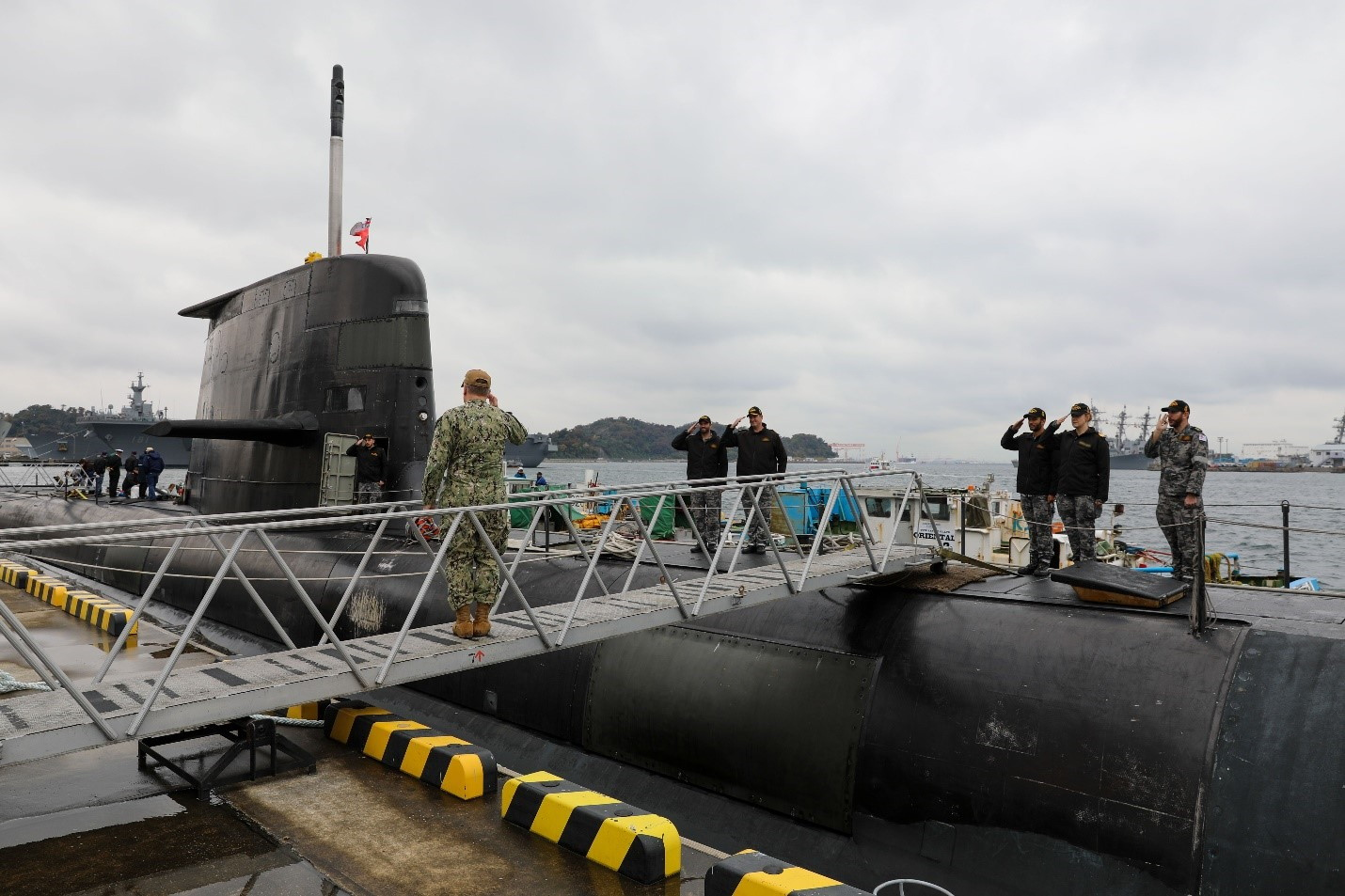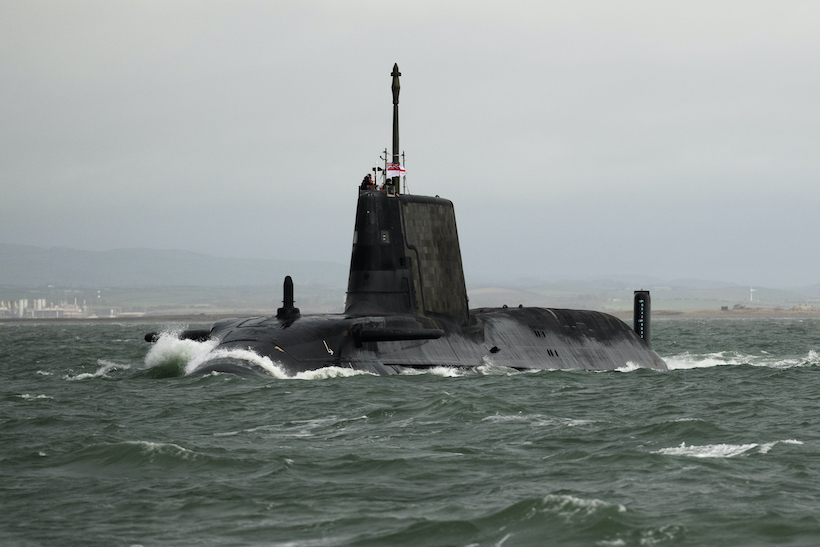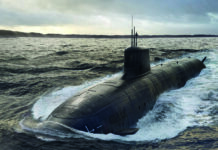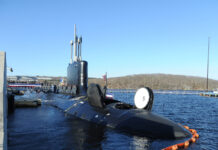AUKUS is a trilateral security arrangement between Australia, the United Kingdom (UK) and the United States (US) that came into being in September 2021. It reflects the shared concerns of the three signatories about the evolution of the Indo-Pacific security environment in the context of the economic and military challenge from China. Of course what the three AUKUS nations see as a perfectly acceptable security arrangement does not reflect how China sees things. Inevitably Beijing views this as yet another unjust effort to limit Chinese rights and to apply more diplomatic and strategic pressure on China.
The arrival of AUKUS as a factor in the Indo-Pacific security equation was unexpected by most and it certainly caught France by surprise and ended up costing Paris a lot of money. While France continues to be annoyed at how AUKUS came about, and the fact that it was excluded and not consulted, this new security arrangement could be extremely significant and have immense strategic implications. On the other hand, there is a danger that it could just turn into yet another diplomatic talking shop, with very limited concrete measures resulting from AUKUS. That being said, if AUKUS delivers in the key areas that have been discussed by the three countries then it could have a major impact on the strategic situation in the Indo-Pacific. Demonstrable successes could also lead to other regional states wanting to join with AUKUS in a broader security partnership offering a significant boost to regional strategic stability.

A Changed Environment
Central to how AUKUS came about was Australia’s perception of its strategic situation and of the steps that it needed to take to manage that situation, both in the current circumstances and into the future. To understand Australia’s strategic situation, it necessary to provide some context through looking at some pertinent data about the country. The data in question is drawn from the US Central Intelligence Agency (CIA) ‘World Factbook’ publication.
Australia is the world’s smallest continent, but with a land area of 7,741,220 km2, it is the seventh-largest country in the world, the largest country in the southern hemisphere, and the largest country without land borders. The Australian population is estimated to be 26,461,166 and 86.6% of this population lives in urban areas, the majority of which are on the periphery of the country/continent.
The country is incredibly well endowed with natural resources. These include: alumina, coal, iron ore, copper, tin, gold, silver, uranium, nickel, tungsten, rare earth elements, mineral sands, lead, zinc, diamonds, opals, natural gas and petroleum. Australia is the largest exporter of coal in the world, with a market share of 29%. While coal has lost its lustre as a fuel source in Europe, in Asia it remains a vitally important part of the fossil fuel energy mix. Australia is also a major exporter of agricultural products, these include: sugar cane, wheat, barley, milk, rapeseed, beef, cotton, grapes, poultry and potatoes.
According to the World Bank, in terms of Gross Domestic Product (GDP), Australia is the 13th largest economy in the world. In terms of exports, Australia’s largest trading partner is China accounting for 39% of exports. In comparison Japan accounts for 15% of Australian exports and the Republic of Korea 7%. In terms of imports, China is the largest supplier accounting for 25% of Australian imports, the next largest supplier of imports is the US with 12%, followed by Japan with 7%.
China is important across so many areas of the Australian economy, according to a Reuters story from January 2023: “Australia’s education sector, which generated AUD 39 Bn (USD 27.66 Bn) in export earnings before the pandemic, has strong ties to China, with roughly 150,000 nationals enrolled in Australian universities.” With China relaxing its harsh COVID protocols and bringing in rules that will not recognise degrees gained via online learning, Chinese student numbers in Australia could grow even further.
The fact that Chinese students could be returning to Australia is a sign that relations between Beijing and Canberra are improving, in a departure from their trend in recent years. Despite the size and importance of trade links between the two countries, relations between China and Australia have been poor. China imposed trade sanctions on Australian coal, barley, wine and other commodities and services. Prior to the imposition of an unofficial ban on imports of Australian coal in 2020, Australia was the second-largest supplier of coal to China. In 2021 and 2022, there were no imports of Australian coal into China. However, according to media reports in early January, China Energy placed orders for Australian coal in January 2023.
There are a number of factors that have led to this thaw in relations between China and Australia, one that cannot be underestimated is the decision by the Chinese government to relax its excessively draconian anti-COVID strategy. This presented an opportunity to open up to the world and to explore new diplomatic and economic possibilities. Mention should also be made of Australia’s own stringent anti-COVID measures, so perhaps both sides were slightly more open-minded than previously.
Another important factor is that there was a change in the Australian government after the May 2022 election, with the Labor Party winning a majority of seats and Anthony Albanese becoming Prime Minister. The previous Prime Minister Scott Morrison resigned as leader of the Liberal Party after conceding the election. From China’s perspective, the ousting of Morrison was a positive development – he was seen as difficult and his role in the formation of AUKUS hardly endeared him to Beijing. Elsewhere, the French government and naval industry were probably content with the fall of Morrison, as he managed to cause them considerable grief.
Developing improved relations with the Albanese government is in China’s interest, if they can weaken Australia’s perception of China as a destabilising factor in the regional strategic equation, that would prove very helpful. Another line of attack to diminish AUKUS is the expense that Australia will incur from the acquisition of nuclear attack submarines (SSNs), a central element of AUKUS. In parallel, there will be references to a destabilising regional arms race and nuclear proliferation. It is quite clear that it is not in China’s interest that Australia gains an SSN capability and develops closer defence relations with the US and, to a lesser extent, the UK.

Starting Points
Fundamental to the Australian security strategy are a number of treaties signed with the US, the first of these is the Australia, New Zealand, and US Security (ANZUS) Treaty signed in 1951. More recently the US and Australia signed an agreement on closer bilateral defence and security cooperation in 2014, as a part of this the US Marine Corps (USMC) and US Air Force (USAF) aircraft conduct frequent deployments to Australia. Australia also has Major Non-NATO Ally (MNNA) status with the US; as such, Australian and US forces conduct frequent joint training exercises.
Beyond long-standing political and cultural ties, there are also significant links with the UK in a defence context, both nations are signatories to the Five Powers Defense Arrangements (FPDA), along with Malaysia, New Zealand and Singapore, signed in 1971. In the event of the threat of an attack or an actual attack, the signatories agreed to consult on what steps should be taken in response. More recently, bilateral defence relations between Australia and the UK have been closer and more codified via the Treaty for Defence and Security Cooperation signed in 2013. Beyond that, there is the Australia-UK Ministerial Consultations (AUKMIN), this is a bilateral forum for the discussion of defence, security and other issues. The UK and Australia also have a more concrete manifestation of defence collaboration via the Type 26 frigate programme from the UK and the building of the Hunter class variant for the Royal Australian Navy (RAN).
First and foremost for Australia is its defence relationship with the US, and both nations have become increasingly concerned over China’s military build-up. It was not just about the number of sophisticated systems that were being fielded by China, it was the expansion of China’s strategic reach. For the first time since the collapse of the Soviet Union, the US Navy is facing a peer-level competitor. Moreover it is a competitor that has been out-building the US Navy and fielding large numbers of modernised units. From Australia’s perspective, the rise of Chinese maritime power coupled with its increasing economic power was becoming their primary strategic challenge. The close economic links between Australia and China were increasingly seen as a vulnerability. This perception was increased as China imposed trade sanctions on Australia.
A Question of Submarines
The RAN SEA 1000 Future Submarine programme was put into place to find a successor to the six Collins class (Kockums Type 471 design) diesel-electric, guided missile submarines (SSG) that had been commissioned into the RAN between 1996 and 2003. The Collins class had been a complicated and controversial defence programme in Australia, but eventually after many years of effort and extra expenditure they had managed to resolve most of the problems. The Collins replacement programme got underway in December 2007, received the SEA 1000 project designation, and then evolved to cover the acquisition of 12 submarines to be built in Australia. To meet the requirements of the project, SSK designs from France, Germany, Japan and Sweden would be evaluated.

Credit: US Navy
In November 2015, Naval Group (at that time DCNS) from France submitted their proposal for the final stage of SEA 1000, which was based on the Shortfin Barracuda Block 1A design. This was an SSK variant of the Barracuda class SSN design as used by the French Navy. In April 2016 it was announced that the Naval Group proposal had been selected, with programme cost being stated at AUD 50 Bn (equivalent to EUR 30 Bn at that time). SEA 1000 was then designated as the Attack class by the RAN. The original plan was that work would commence on the programme in 2023 and would continue over 25 years, with HMAS Attacker, the lead boat of the class to be delivered in the 2030s.
The timeline of the submarine programme indicated a long-term relationship between Australia and France, however this was intended as more than a defence-industrial relationship. It was also a strategic security relationship as France is itself an Indo-Pacific nation via its overseas territories (France d’outre-mer) in the region. Forging a strong security partnership with Australia was absolutely in the national interest of France.
As time went on, doubts began to surround the submarine programme, firstly there was cost escalation, as an official figure in October 2020 referred to a total programme cost of AUD 80 Bn, a 60% rise in costs over a little more than four years! At the same time, doubts were being expressed over the share of work available to Australian industry. Negatives were starting to surround the Attack class programme.
The End is a Start
A further set of factors then came into play, these were based on what the RAN actually wanted to do with its submarine force. How they envisaged submarine operations in the Indo-Pacific was going to require a submarine capable of extended range operations and long endurance, they then had to take into account the current and future operational capabilities of their most likely strategic competitor and adding this all together, it was reaching the limit of what an SSK could achieve. In reality, for many years, the submarine requirements of the RAN were a requirement for an SSN. The reason the SSN solution had never materialised was a strong anti-nuclear posture at a political level, no nuclear industry in Australia and the cost of acquiring SSNs.
At the end of 2020/start of 2021, all of these different factors came to a head. China imposed economic sanctions on Australia, Chinese naval expansion continued at an incredible rate, thus destabilising the regional strategic equilibrium. In response, Australia sought to draw closer to traditional allies in the form of the US and the UK, in terms of wide ranging defence and security cooperation. Australia then came to the conclusion that it needed and could afford an SSN force, and that acquiring such a force would be possible via defence collaboration arrangements with the US and UK.

Credit: Australian DoD
This led to an Australian government announcement on 16 September 2021 that: “Australia, the United Kingdom and the United States have agreed to the creation of an enhanced trilateral security partnership – AUKUS.” The statement continued: ”AUKUS will build on the three nations’ longstanding and ongoing bilateral ties, and will enable the partners to significantly deepen cooperation on a range of emerging security and defence capabilities, which will enhance joint capability and interoperability. Initial efforts under AUKUS will focus on cyber capabilities, artificial intelligence, quantum technologies, and additional undersea capabilities.”
As a part of this the Australian government stated: “The first initiative under AUKUS is for Australia to acquire nuclear-powered submarine technology, leveraging decades of experience from the US and UK.” Due to this Australia would no longer proceed with Attack class submarine programme. The point to remember here is that France knew nothing about AUKUS and did not suspect that the Attack class would be cancelled. The end result was major damage to Franco-Australian relations, although under the Albanese government a healing process seems to be taking place.
Working with the US and the UK, Australia has developed a strategy for SSN acquisition, industrialisation, operational factors and sustainment.
The Next Steps
On 13 March 2023, Australia’s chosen path forward was revealed in a joint announcement in San Diego from President Biden, Prime Minister Sunak, and Prime Minister Albanese. The announcement stated that Australia’s acquisition of an SSN capability would take place in three phases.
Under the first phase, the US and UK would train Australian sailors to operate SSNs, with the US deploying four Virginia class submarines and the UK deploying one Astute class submarine to Australia’s HMAS Sterling Naval port located near Perth on a rotational basis. The initiative is known as ‘Submarine Rotational Force-West’ (SRF-West), and is due to commence in 2027. Australia will also construct shipbuilding and maintenance facilities in Adelaide to prepare for the following phases.
Under the second phase, Australia is slated to procure three Virginia class submarines, with the option for a further two, from the US as an intermediate SSN capability. These are due to begin entering service in the early 2030s.
Under the third phase, Australia and the UK will jointly produce the future submarine design dubbed ‘SSN-AUKUS’ for both navies. This will be based on UK’s the SSN(Replacement) (SSN(R)) programme to replace the Astute-class, but will be modified from the original design. The SSN will be designed by BAE Systems, powered by a Rolls-Royce nuclear reactor, and will incorporate unspecified US submarine technologies. The design and development of SSN-AUKUS will commence in 2023, although it is worth noting that some of the groundwork has already been covered under the SSN(R) programme. The submarines are due to be constructed at BAE Systems’ Barrow-in-Furness facility in the UK, and presumably at the Adelaide facility in Australia. The first UK boats are expected to be delivered in the late 2030s, while Australia is slated to receive its first boats in the early 2040s.
As part of the agreement, Australia will not enrich or reprocess spent nuclear fuel, nor produce its own nuclear fuel for its SSNs. The fuel is due to be provided by the UK and US in the form of sealed, welded units which will not require refuelling during their useful life. The work share of nuclear fuel supply is so far unclear, but presumably the US will supply the fuel for Australia’s Virginia class boats, while the UK will be the supplier for ‘SSN-AUKUS’. It is also presently unclear whether Australia would retire or aim to continue operating their Virginia class boats once their ‘SSN-AUKUS’ boats have entered service.
In taking this ‘best of both worlds’ approach, defence-industrial relations between the three powers have been strengthened considerably, and Australia is due to secure a credible SSN capability through the 2030s and 2040s. However, as should be expected, such a move is likely to generate a corresponding response from China. While the form of this response is not yet known, the strategic situation in the Asia-Pacific region does not yet appear bound for calm waters.
David Saw and Mark Cazalet









